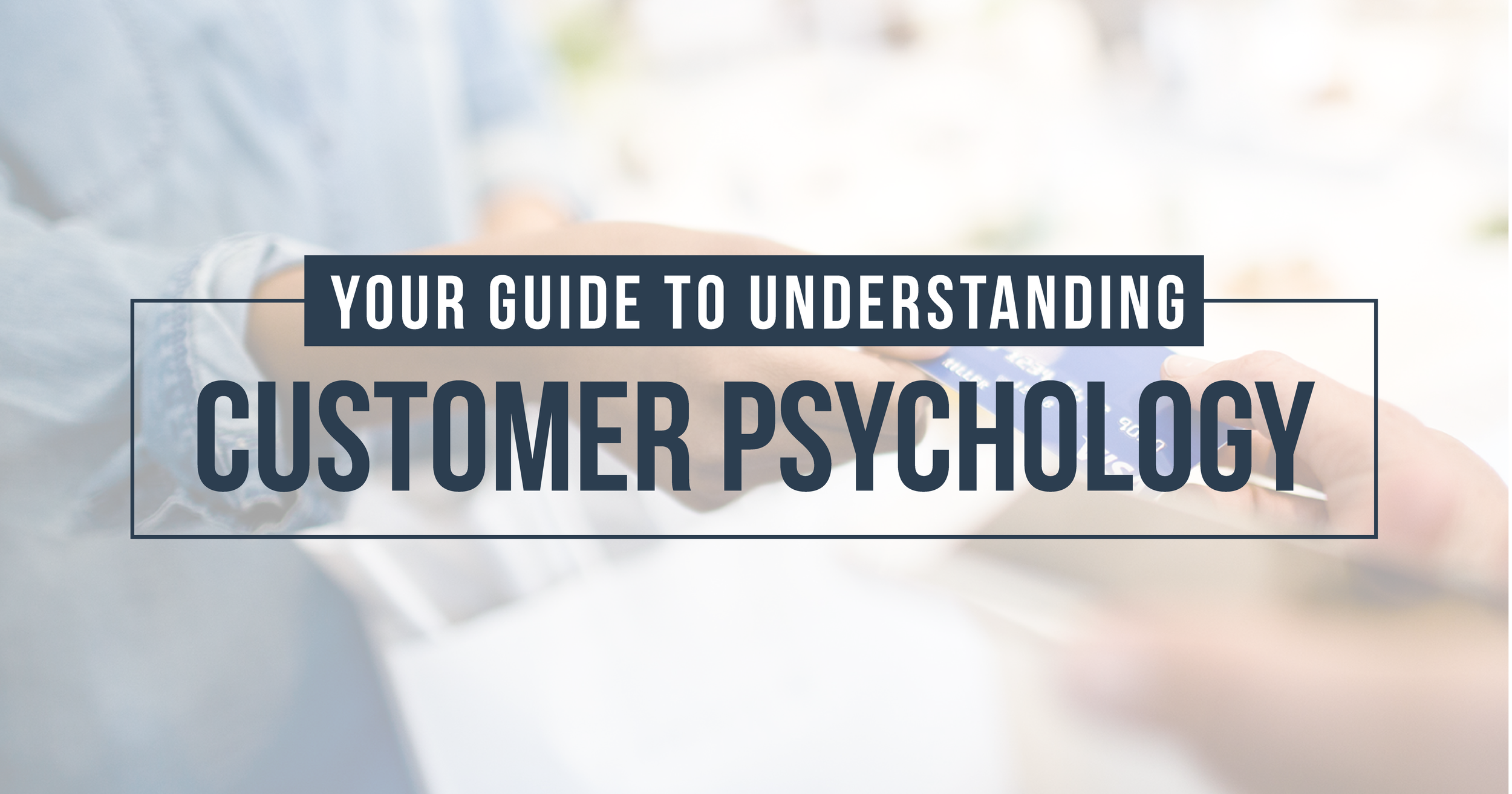
When a customer sets foot in your store, you’ve won a huge victory. Not only has that person chosen you amongst all the competition, but they are now actively engaged with your business and ready you make their buying decisions.
They’re not casually browsing your website while their kids are running around and screaming in the background. They’re not passively hearing your commercial on the radio while navigating rush hour traffic. They’re in your store – ready to buy and ready to listen.
Sadly though, most businesses punt this opportunity away.
Marketing at the point of sale tends to be the last thing business owners or marketing professionals think about when creating their marketing campaigns. They may give it the old college try with some posters or countertop ads, but honestly, who pays that much attention to those things. Not human beings most of the time.
In order to market to the people that have entered your business, you need to understand the psychology that goes into their consumers’ decision making. Once you’re prepared to address that, you can effectively speak to the people in your business and even influence their buying decisions.
Modern Shoppers & Buying Decisions
As society changes, people change. They change how they speak. They change how they dress. And yes, even consumer buying habits have changed. Let’s take a look at some of these trends.

The Well-Informed Shopper
Perhaps the biggest catalyst of consumer evolution has been the convenience of the Internet and the power of mobile devices. People have access to the information they want whenever they want it.
Marketing researchers have found that consumers complete 70-90% of the buyer’s journey before they ever reach out to a vendor. Which is why when we say a customer stepping foot in your business is a huge victory, we mean out of everyone they considered and researched, you were the chosen one.
On one hand, this means that you really do need to spend some time and effort on the digital marketing campaigns that drive traffic to your website and store (think SEO, website content, independent reviews, video marketing, etc.). On the other, this also means that, in order to capitalize on this traffic, you need to be ready to provide amazing customer experiences.
Aggressive Salespeople Kill The Shopping Experience
Another unintended consequence of the rise of technology is that people are becoming less and less comfortable with human interaction. And while this could just mean they don’t know how to hold a conversation outside of Twitter, this also means that people are becoming increasingly uncomfortable with pushy sales people and their tactics.
Remember, when a customer arrives at your store, they’ve likely done their research into your products or services. So in their mind, they don’t need to be sold. Continuing to push the hard sell will do more harm than good.
However, you still need to reinforce your business at some point. So how do you make the sale without pushing the sale? You’re going to need to focus on content marketing, brand awareness, and positioning yourself as the expert voice (and we’ll tell you exactly how to do that later in this article).
Speed, Relevance, and Reliability
People can’t buy everything online, at least not yet. However, when they do have to shop in-person, they still expect the same convenience as if they were shopping from the comfort of their home.
As the on-demand culture grows, people’s patience decreases. There is little tolerance for things like wait times or delays. However inevitable some of these things are, if you upset your customer’s shopping experience, your brand will pay and your customers will end up shopping somewhere else.
That being said, there are ways to address these issues. For example, having digital signage in your waiting area can decrease perceived wait time by 33%. So if your customers have to wait, make sure that the wait feels as short as possible.
The Science and Psychology of Customer Engagement

While consumer shopping habits may have changed, there are still some core underlying behaviors that remain intact. Businesses that are able to capitalize on these will continue to win their customer’s trust. Let’s take a look at a few psychological triggers that can still influence your customer’s purchase decisions.
Make The Customer Feel Valued
One of the easiest ways to influence a consumers decision-making process is by making them feel valued. This can be done by creating unforgettable customer experiences, or by simply giving them something for free.
Giving your customer something creates a sense of reciprocity – you gave them something and they feel obligated to give something back to you. Even if you can’t give away a free product or service as a sample, you could try to give away content. Remember, today’s shoppers love information, and free content on your website or social media (blogs, graphics, videos, etc) are a great way to give them what they’re looking for, as well as possibly creating a sense of gratitude towards your business.
Be The Expert
People tend to be hard-wired to respond to authority. And since you’re staff are highly qualified and expertly trained, you’ll want to make sure you highlight that during the path to purchase.
You can also play the part of industry expert by showing up on their social feeds. When you post to social media and one of your followers’ shares that post, you’re no longer the one demonstrating how great you are – a satisfied customer is. And you now look like the authority on the topic their sharing.
Create Urgency
One of the oldest and most effective ways of making the sale is through an expiration date. People are afraid of missing out and are more likely to take action if they think there is an end date.
Address The Old Brain
Finally, a little biology. The human brain is broken into three major components, with the outermost section (the new brain) responsible for rational and analytical thought, and the middle two sections (the old brain) responsible for our feelings, like trust and loyalty. Have you ever had a “gut feeling?” That’s the old brain.
Most businesses try to talk about the what and how of their business. And while it can be effective, it gets processed by the new brain and digested using logic and reason. But when businesses talk about why they do what they do, they can skip right over that and get to the old brain, where all the decision making happens.
So if you want to communicate with your customer’s decision maker, then you need to communicate why they should trust you, and not just what products or services you sell.
In Store Marketing That Affects Decision Making

So what does this all mean for your business? Well, for starters, you need to be able to win online and drive traffic to your store. You won’t find any shortage of people telling you that SEO, social media, and PPC ads are a key part of any digital marketing campaign.
But we want to look beyond that, at the final stop in the buyer’s journey. How can we take what we know about today’s shopper and how they make buying decisions, and use that to drive more sales from the customers who show up at your door
Promote Brand Awareness
Though most marketers will tell you that ROI is the best measure of a campaign’s success, that doesn’t mean that soft marketing is chopped liver. Telling your story, sharing your community involvement, or giving customers a sneak peek behind the scenes all help win them over to your brand. Suddenly, they’re not buying tires from a salesperson – they’re buying tires from a local PTO member, or little league coach. Someone who grew up in the same area they did, and supports the same sports team.
Every business has a story to tell. Whether it’s about their founding and how long they’ve been serving the community, or how they provide outstanding value and stand behind their products or services with a guarantee and brand promise. If you can successfully do that, you can cut through the parts of your customer’s brain that deal with logic and reason, and speak directly to the parts that “feel” in order to establish a connection and build trust.
Most people won’t do this using posters or countertop ads – those are reserved for selling and promoting products. However, digital signage offers a modern, flexible platform that allows you to share everything from your brand values to your latest promotion. More on digital signage in a moment.
Optimize Customer Engagement Through Content
Content marketing has become a great way that business are achieving customer engagement in the modern era. Remember, customers, don’t like the hard sell or aggressive tactics. So marketers have begun to provide content for consumers to stumble upon themselves.
Ultimately, the goal of this content is the same as the pushy salesperson – to make the sale. But it takes a more organic approach, one that empowers the consumer to arrive at the buying decision for themselves.
The content you create could take many forms, from an animated infographic to an employee bio slide, to a limited time offer that creates urgency. But the important thing is that you’re not shoving it down your audience’s throat. You’re letting them discover it for themselves.
Implement Digital Signage
The final step that brings everything together is a modern, digital advertising platform for inside your business.
Want to tell your story? Need to promote a sale to create urgency? Want to share influential content or customer reviews at the point of sale? Looking for a modern platform that will engage, educate, and entertain customers? Digital signage makes all these things (and more) possible.
The flexibility digital signage offers is unparalleled when it comes to in-store, point of sale marketing. People notice digital signs 400% more than static signage and one in about five customers will make an unplanned purchase because of something they saw on digital signage.
So whatever is important to your shopping experience. Whatever products or services you need to highlight, or whatever story you want to tell to raise brand awareness, make sure you implement it on an effective platform.

The Next Step Towards Improving Customer Experiences
Now that you know all that, influencing the purchasing decisions of your customers should be easy, right? It’s probably easier said than done. That’s okay. We’d like to help.
If you’re interested, we want to offer you a free, no obligation consultation to help determine if 10 Foot Wave has the platform to help you deliver better customer engagement – one that results in a better shopping experience for the people in your business and more customer buying.